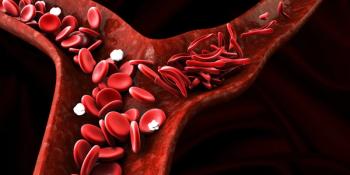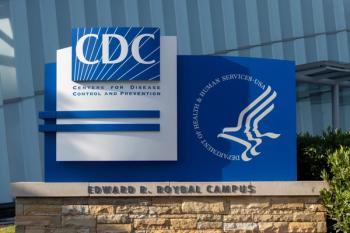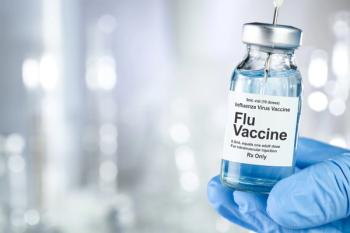
- January 2019 Vaccine-Preventable Disease
- Volume 85
- Issue 1
Minimize the Likelihood of Vaccine-Related Adverse Reactions
Pharmacists Should Carefully Screen for Contraindications and Precautions Before Immunizing Patients.
Pharmacists Should Carefully Screen for Contraindications and Precautions Before Immunizing Patients.
Vaccine-related adverse reactions are generally mild, but on occasion, patients experience severe or even life-threatening reactions. Pharmacy-based immunizers can minimize the likelihood of adverse reactions by carefully screening for contra­indications and precautions before administering any vaccine. Even with careful screening, however, reactions may occur.
Patient Reactions: Think in 3’s
Patients generally develop 3 types of vaccine-related reactions (see Figure 1).1-3 Immunizers need to expect that patients may have mild reactions. As such, they should be prepared to discuss potential reactions and their management with patients and provide a toolkit of items that can soothe an uncomfortable injection site. Importantly, mild reactions generally occur within a few hours of the immunization and resolve within hours to days, with 1 exception: Reactions to measles vaccines may be delayed or prolonged, potentially lasting even several days. Specifically, after getting the measles/mumps/rubella vaccine, patients may experience a fever and a rash in the following 7 to 10 days and, rarely, parotitis 3 weeks after.2,4
Immediate-type allergic reactions, including anaphylaxis, can be life-threatening. Usually, patients have no long-lasting problems after this type of reaction. Pharmacy staff members need to have a plan in place to contact emergency medical services immediately if a patient experiences a severe vaccine reaction. Because these reactions are rare, staff members should also review the procedure together or run “mock codes” during quiet times to ensure that they are always prepared.2 It is also critical to remember that there are no contraindications to administering epinephrine.3
Immunizers need to be aware that coincidental reactions are common. They are unrelated to the vaccine and are more likely to happen in small children, who contract many bacterial and viral infections. These reactions are also more likely in communities with high levels of concern about vaccines and when a vaccine is new.5 Immunizers can ask for a consultation from the Clinical Immunization Safety Assessment Project to help collect, interpret, and assess symptom causality by emailing CISAeval@cdc.gov.
Error-Related Reactions: 5 Failures
Some adverse events that follow immunization emanate from human error, and the number of errors has increased in recent years. The CDC believes that complex immunization schedules, an improved ability to identify storage and temperature lapses, and products with similar sounding acronyms and names have led to increases in the number of errors.6 These errors are preventable and represent a failure on the part of the health care system. When mistakes related to vaccine preparation, handling, storage, or administration occur anywhere in the supply chain, patients may experience events that range from mild to life-threatening. Figure 2 lists the 5 types of errors that may cause patient reactions.7,8
It is imperative that pharmacies monitor their immunization practices. If immunizers identify any type of problem, they must correct it immediately and ensure that it will not occur again. In particular, they should watch for clusters of events, which are 2 or more cases of the same adverse event related by place, time, or vaccine administered. If clusters occur, immunizers need to determine whether they are related to a specific facility, immunizer, and/or vial of vaccine. If the problem is related to a specific vaccine, it is critical to determine whether it was contaminated or prepared incorrectly. If it is related to a batch of several vials, the immunizer should suspect freezing during transport, which often leads to a higher likelihood of local reactions.8
Jeannette Y. Wick, RPh, MBA, FASCP, is an assistant director of the Office of Pharmacy Professional Development at the University of Connecticut School of Pharmacy in Storrs.
References
- Adverse events following immunization. World Health Organization website. vaccine-safety-training.org/overview-and-outcomes-3.html. Accessed November 18, 2018.
- Vaccine reactions. World Health Organization website. vaccine-safety-training.org/vaccine-reactions.html. Accessed November 18, 2018.
- Medical management of vaccine reactions in adult patients. Immunization Action Coalition website. immunize.org/catg.d/p3082.pdf. Accessed November 18, 2018.
- Vaccine safety and the management of adverse events following immunization. World Health Organization website. vaccine-safety-training.org/tl_files/vs/pdf/UKDH_GreenBook.pdf. Accessed November 18, 2018.
- Coincidental reactions. World Health Organization website. vaccine-safety-training.org/coincidental-events.html. Accessed November 18, 2018.
- Hibbs BF, Moro PL, Lewis P, Miller ER, Shimabukuro TT. Vaccination errors reported to the Vaccine Adverse Event Reporting System, (VAERS) United States, 2000-2013. Vaccine. 2015;33(28):3171-3178. doi: 10.1016/j.vaccine.2015.05.006.
- Immunization error-related reaction. World Health Organization website. vaccine-safety-training.org/immunization-error-related-reaction.html. Accessed November 18, 2018.
- Hibbs BF, Miller E, Shi J, Smith K, Lewis P, Shimabukuro TT. Safety of vaccines that have been kept outside of recommended temperatures: reports to the Vaccine Adverse Event Reporting System (VAERS), 2008-2012. Vaccine. 2018;36(4):553-558. doi: 10.1016/j.vaccine.2017.11.083.
- Di Pasquale A, Bonanni P, Garçon N, Stanberry LR, El Hodhod M, Tavares Da Silva F. Vaccine safety evaluation: practical aspects in assessing benefits and risks. Vaccine. 2016;34(52):6672-6680. doi: 10.1016/j.vaccine.2016.10.039.
Articles in this issue
almost 7 years ago
Organize Marketing to Increase Pharmacy Cash Flowalmost 7 years ago
Can Pharmacists Take Legal Action After Being Fired?almost 7 years ago
New Opioid Approval Creates Controversyalmost 7 years ago
Patients Are Increasingly at Risk for Insulin-Drug Interactionsalmost 7 years ago
Managing Patients With Type 2 Diabetes Poses Challengesalmost 7 years ago
Pharmacists Need to Understand Law Related to Controlled Substancesalmost 7 years ago
Adult Vaccination Rates Are Rising but Fall ShortNewsletter
Stay informed on drug updates, treatment guidelines, and pharmacy practice trends—subscribe to Pharmacy Times for weekly clinical insights.






















































































































































































































